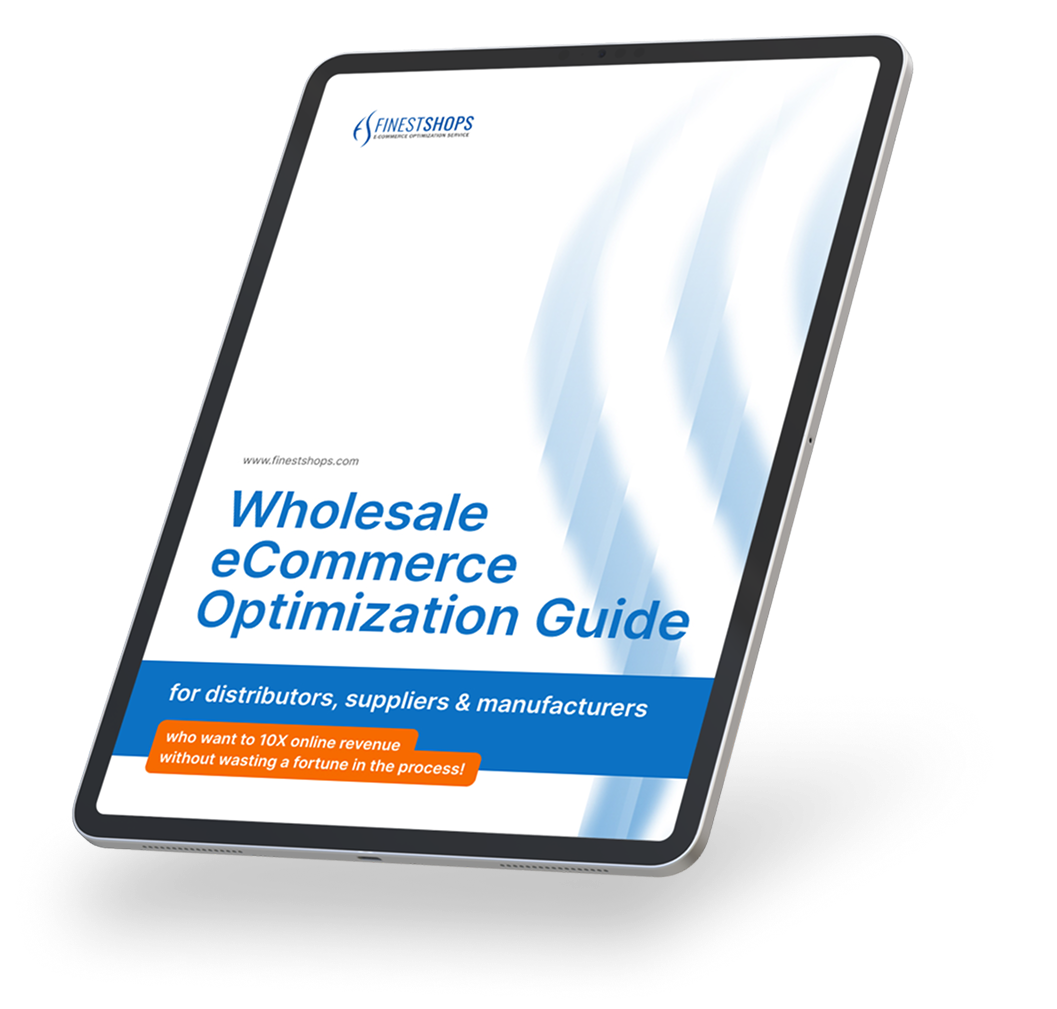Is your business ready for the post-pandemic surge in B2B commerce? Since Covid-19, the eCommerce industry has reached dizzying heights. Last year, eCommerce spending in the US grew from 11.8% in Q1 to 16.1% in Q2 and as the world continues to try and rid itself of the coronavirus, we’ve become increasingly more digitally focused.
People are now used to buying products online and spend less time interacting directly with sales staff via phone calls, email, and faxing. Buyers expect communication and requests to be instant, forcing B2B businesses to focus more heavily on optimizing their website to meet these demands and remain competitive.
 My name’s Anton Pachkine and in this article, I’m going to show you exactly how to optimize your online catalog for the post-pandemic surge. I’ve been building eCommerce systems since 2003 and if at any point you feel confused, please don’t hesitate to reach out to me for more information. You can do so by booking a time in the calendar below.
My name’s Anton Pachkine and in this article, I’m going to show you exactly how to optimize your online catalog for the post-pandemic surge. I’ve been building eCommerce systems since 2003 and if at any point you feel confused, please don’t hesitate to reach out to me for more information. You can do so by booking a time in the calendar below.
B2B commerce challenge facing many wholesalers & manufacturers
Covid-19 has transformed our relationship with digital technology forever. A recent survey highlights that the pandemic has accelerated digital adoption amongst businesses by several years, and there’s no sign of these changes stopping any time soon.
Businesses have recognized the importance of adapting to this immense rise in digital technologies but are uncertain of how to make the transition. This comes as no surprise since online optimization can be both complex and overwhelming.
But not knowing how to achieve this can be costly. Every day there are more B2B businesses that are investing heavily in their online catalog to stand out from their competitors and maximize sales. Because of this increased emphasis on digital, customer online expectations have reached an all-time high.
Those who fail to optimize their website will provide an underwhelming online experience that will only discourage customers from ordering from them. Instead, online visitors are most likely to leave and go to a competitor’s website that’s able to fully match their expectations.
To successfully adapt to the post-pandemic surge, there are a number of fundamental elements that your website must be optimized for.
Below is a checklist to help you successfully make this transition.
Online B2B commerce Checklist. Part 1
1. Notify customers when you’re out of stock
We live in an era where communication is instant. Customers must be given live information about your products.
Surprising a customer with delayed information about their purchase, such as a canceled order due to out-of-stocks, will devastate both your credibility and reputation.
Here’s what you can do to prevent this from happening:
- Highlight when your product will be available instead of just saying that it’s “out of stock”
- Enable customers to enter their email address so they can be notified when the product is available
- Offer an alternative product that can satisfy their needs
2. Shift more customer service responsibility onto your eCommerce platform
Humans are always prone to error. Not every member of your customer service team is going to have the experience or the information required to handle customer service inquiries effectively.
Over time these deficiencies will create friction between customers and the company, making a repeat purchase less likely. You can prevent this from happening with a modern eCommerce platform. Here’s how it can help you:
- Reduce errors: Staff having to take orders over the phone or enter data manually will inevitably make mistakes. When you digitize orders, you’re streamlining your customer service, which will reduce errors.
- Notify customers of incomplete orders to recover lost orders: Automatically letting customers know of any partially filled forms will help them make the order as well as maximize sales.
- Provide customer service teams with more support: Quite often, modern eCommerce platforms are easier to navigate than internal systems. Customer service personnel and the sales team can use your website to access information instantly, share links with buyers and provide additional resources such as datasheets, specs, images, and videos.
3. Provide customers with self-service ordering
Putting all of the responsibility onto salespeople to process orders is a sure way to strangle your sales. Buyers should always have the opportunity to make the order themselves any time from any device.
Doing so will free up more time for staff, remove a barrier on the customer’s journey and encourage more orders. An effective modern eCommerce platform will enable self-ordering for purchases that don’t need any human interaction and reduce human involvement whenever possible.
just a reminder here… If you’re unsure of anything that’s been mentioned in this article, don’t hesitate to get in touch with me for more information. To do so, simply book a time in my calendar.
B2B commerce Industry Facts and Trends
- eCommerce spending in the US during last year grew from 11.8% in Q1 to 16.1% in Q2 (Search Engine Land, 2021)
- The eCommerce industry is growing by 23% every year (First Site Guide, 2021)
- Over two billion people bought products or services online in 2020 (Statistica, 2021)
- E-retail sales exceeded $4.2 trillion worldwide (Statistica, 2021)
Looking ahead into the B2B commerce digital future
The world of B2B commerce is becoming increasingly more digitized. We were already heading in that direction but the emergence of Covid-19 has accelerated this transition, creating a post-pandemic surge for many businesses.
At a minimum, buyers expect an efficient online ordering experience that prevents them from having to directly interact with staff for more information about products. Customer expectations are at an all-time high and those businesses who don’t create this digital foundation will stay behind.
This will have a negative impact on sales and make it more difficult to remain competitive with other businesses that are already investing in digital technology.
If you would like more information about what we’ve covered or are unsure of any of the points made, don’t hesitate to book a call in my calendar.

